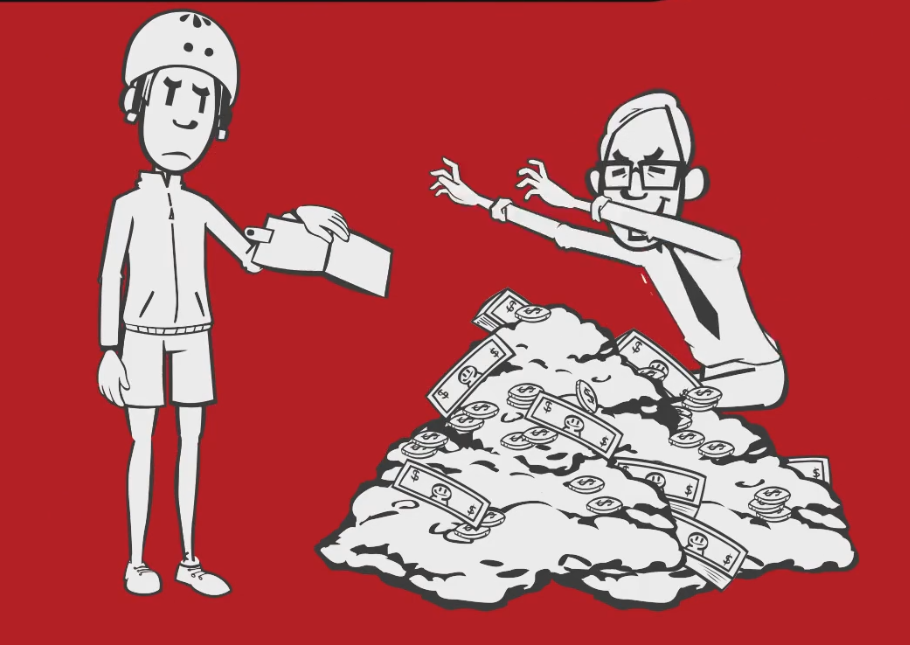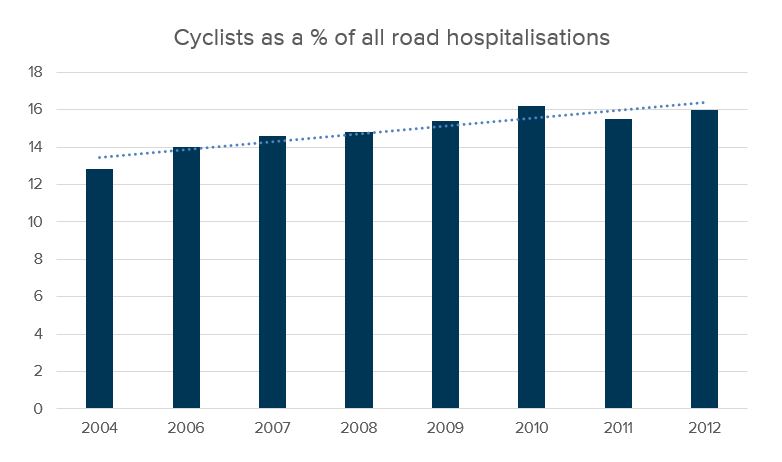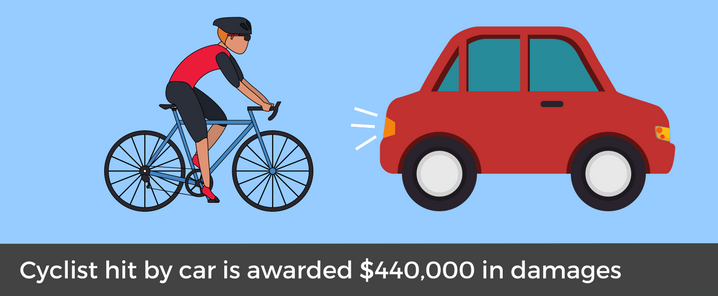The Facts
Jason, an active and fit 37 year old, was a passionate cyclist. He rode his bike to and from work every day. On the morning of 26 November 2014 Jason was cycling to work on his normal route. As he was riding on the left hand side of Noble Street in Windsor, QLD, a vehicle has suddenly and unexpectedly reversed out of the carpark and directly into Jason’s path.
Jason hit the brakes and attempted to swerve around the vehicle however he was unable to avoid a collision. He collided with the rear back passenger side of the vehicle which caused him and his bike to be thrown over the boot of the car and onto the roadway.
Jason sustained a number of injuries in the accident including:
- fractures to his neck;
- fracture to his right wrist;
- microfractures to his left knee; and
- bursitis to his left elbow.
Jason pursued a personal injuries claim against the CTP insurer of the vehicle that collided with him.
Want to know how to stop lawyers overcharging?

Watch our step-by-step video guide and discover:
Not watching the video may be the most expensive mistake of your life.
The Outcomes
At the time of the accident Jason worked as a Project Manager in the oil and gas industry. He was earning approximately $3,000 net per week. Jason was required to take about 3 months off work as a result of his injuries. He recommenced his employment on a graduated return to work program.Jason found that his neck injury in particular continued to cause him problems. He found he was…
- less efficient;
- less productive; and
- less suited
…to working the long hours required of him in his position as a Project Manager.
Following Jason’s return to work there was a decline in the oil and gas industry and as Jason was struggling with his task load and was made redundant shortly after returning to work.
Due to Jason’s ongoing symptoms he was no longer suited to his role as a Project Manager. Prior to the accident Jason was a highly driven man who had ambitions of progressing his career within the oil and gas industry. His ultimate goal was to progress to the position of COO or even CEO. This career path was no longer possible for Jason.
Jason was unemployed. He needed to find a form of employment that would provide him flexibility in his working hours so he could manage his ongoing symptoms. He therefore embarked on setting up a home-based online retail business and a consultancy business.
To progress his claim, Jason needed to document what his plans were prior to the accident and how his career ambitions would be affected by his injuries. He also had to obtain the evidence to support those claims.
To do this he contacted a past general manager and the current COO of the oil company he had worked for prior to the accident. From those conversations Jason was able to establish that an employee at the company with comparable skills to Jason took over his role and continued to be employed by the company. This evidence was used as a predictor for what Jason would have been capable of had he not sustained his injuries in the accident.
After supplying the insurer with the evidence to support his claim, a conference with the insurer was held. Jason was able to successfully resolve his claim at that conference for a sum of $440,000.
Cycle Law's Opinion
This case is a good example of how to settle a case on the best possible terms at the earliest opportunity. Unless you support your claims with solid evidence, an insurer will not agree to pay you the compensation you deserve.
The key to receiving a good award for damages is the evidence you gather to support your case. Every person will be impacted by their injuries in very different and specific ways depending on their circumstances.
Cyclist Casualties
Jason’s case is not an isolated one. Cycling has become a common and efficient mode of transport for many people. However, there are many associated safety risks for cyclists on our roads. Cyclists continue to remain vulnerable on our roads and errors by motorists that may result in a minor incident for a motor vehicle user can have major consequences for a cyclist.
The Department of Infrastructure and Regional Development has published data concerning the percentage of traffic crash casualties as a result of cycling. The table below sets out the fatalities and injuries (hospitalised and police-reported) arising from cycling accidents on our roads between 2003 and 2014:
Due to an increase in the amount of people cycling on our roads, traffic crash casualties relating to cyclists has been slowly increasing from 12.8% in 2003 to 16% in 2011-12.

Cyclist road safety and the one metre breach rule
In an effort to provide more safety to cyclists on the roads, the one metre breach rule was introduced in Queensland in 2014. With the introduction of this rule drivers must ensure they keep a distance of at least one metre away from cyclists in 60km/hour zones and 1.5 metres from cyclists in zones with greater speed limits. If they do not it is now considered an offence and they risk being charged by the police.
The introduction of this law is an important safety measure for cyclists to increase the awareness of motorists. It means that motorists are more likely to keep a lookout for cyclists on the roads. Unfortunately however, cyclists such as Jason continue to be injured by motorists who fail to keep a proper lookout for cyclists.
It is important to know that if you are injured in a cycling accident through the fault of a motorist, there are avenues you can take to assist with your recovery and be compensated for your injuries.

